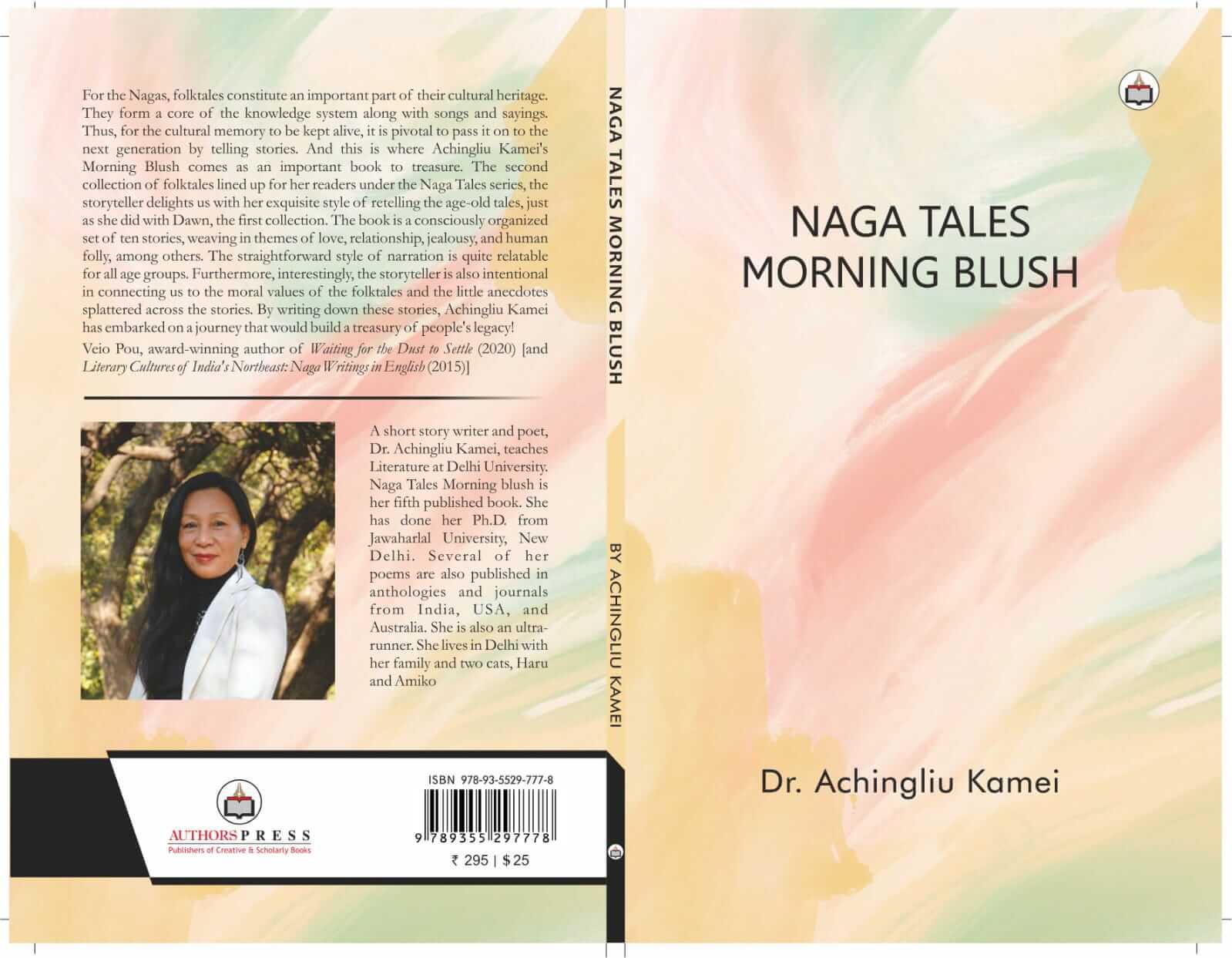Reading Time: 3 minutes
Dr Jyothsnaphanija reviews Achingliu Kamei’s recently appeared collection of Naga tales titled Morning Blush – exclusively for Different Truths.
Stories make us relive our memories, experiences, and perceptions. Oral stories, in particular, contain natural play with language, presenting lively characters where people are comforted by nature. Achingliu Kamei’s recently appeared collection of Naga tales titled Morning Blush captures rural landscapes, thrills readers, and is a perfect companion for children and adults alike. The collection has thrilling stories that she has collected from folklore, which replicates her strenuous efforts of keeping the forgotten tales in the form of a book to be enjoyed by everyone. The stories are witty. The dialogues are natural and spontaneous. This book is the second in the series of Naga Tales, as the first book was Naga Tales – Dawn (2017. Readers may expect more books in this series.
The foreword by Dr Visier Sanyii and the introduction by Kamei throw light on the essential aspects of storytelling, particularly the folk story. The author’s stories, recorded, transcribed, and re-told in English, help any researcher who needs knowledge of folk culture and literature. There is much necessity to research the folk wisdom or literary landscapes of folk culture. Achingliu Kamei, a poet and writer herself, tries to translate the Naga tales with an emphasis on gender aspects. For example, she stresses the namelessness of woman characters in these tales, as in The Sad Story of Beloved of Pongring, Pongring’s beloved is not named. In the story, Athampu and Basket of Salt, Athampu’s wife is also not named. The stories also highlight how women were working in the fields and performing domestic chores with strenuous efforts; in the other story, called Angumma, the reader learns how Angumma’s aunt loses a finger while working with the pestle grinding. Women’s position was submissive, even though they worked throughout the day in the home and the fields.
These stories also highlight human interaction with animals…
These stories also highlight human interaction with animals; while reading, anyone can relate to the childhood experiences of imagining animals belonging to their human world. Athampu takes some clothes to barter for salt, indicating the ancient timeframe of these stories when money was not invented. By bringing forth the forgotten tales into a book form, Achingliu makes the reader nostalgic for their cultural heritage when they read about the traditional instrument Inrah, the weaving tool tambian, the various and elaborate processes in preserving meat for months, or the iron ring Tadip and merit feasts. Songs are another integral part of oral culture. The reader encounters several such songs in this collection as Pongring’s beloved sing the sad songs; in the story titled The Daughter who Turned into an Azuina, A Dove, the lonely daughter sings to her lost mother about her present Cinderella’s state, the story Gairemang and Gniliannei present the songs of separation. Achingliu’s poetic approach is visible when she compares—dried fish under the sun, appearing like evening sunlight on scales.
Folklore has a cultural turn and uniqueness which also resembles the folklore of other regions, as the story Asa and Micharung’s Hunting, where Micharung fails to understand instructions in hunting, has the similarity of a Telugu story, where a newly married girl doesn’t listen to the teachings of making a vada, the traditional dish. While the Naga story presents hunting, and a man’s inability to follow the instructions correctly, the Telugu story shows a woman’s curious nature disallowing her to listen to the instructions properly. Both the stories present the regional scape and confine respective genders to what is expected of them.
The stories not only bear the similarity within the Indian context but other mythological tales of the Western context…
The stories not only bear the similarity within the Indian context but other mythological tales of the Western context, as the story Tumnung and Jangnun bears little similarity with the story of Orpheus and Eurydice. Presenting rural life as the people reading the moon’s phases to decide which plants and vegetables to be harvested, deciphering what the air says, children becoming ingenious day by day with their new games with leeches, the stories encapsulate the joy of shared living. The collection is a must-read for both pleasure and knowledge.
Cover sourced by the reviewer.
